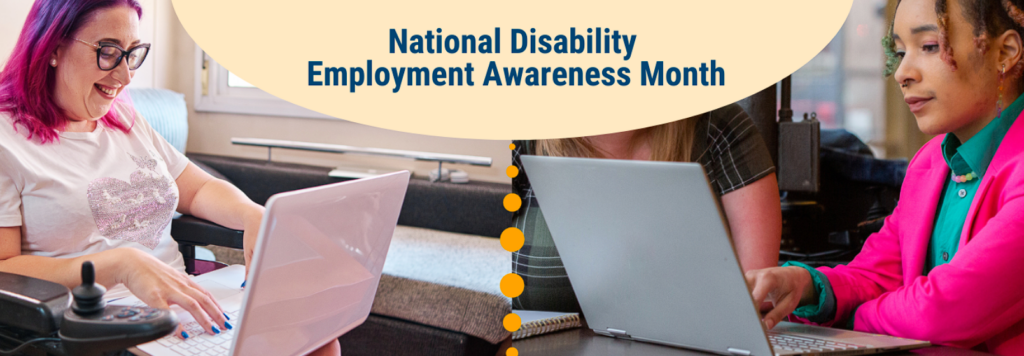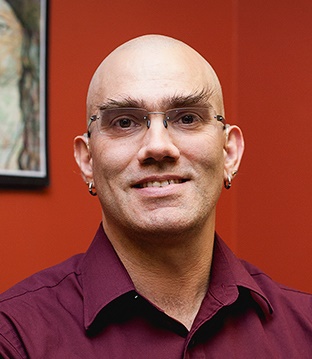Bridging the Tech Divide: IT Employment in Deaf and Hard-of-Hearing Communities
by Blog Writers
By Crom Saunders
As Americans watch the rise and fall of our economy under different administrations in the White House, employment remains a vital issue to Americans: the ability to live and support oneself at least, if not others in addition. While this concerns people of all ages and in any situation that necessitates earning income, there are certain communities that face additional challenges in finding jobs that pay sufficient wages for the work done. The well-documented glass ceiling for women, and the discriminatory practices in hiring (or not) of people of color and people with disabilities. One community in particular that has consistently experienced underemployment, both in a scarcity of job opportunities and limited growth or promotion options in the workplace, is the Deaf and Hard-of-Hearing (DHH) community.
While DHH employees and would-be employees are afforded some degree of legal protection and/or recourse, due in part to laws such as the Americans with Disabilities Act, the Rehabilitation Act, or the Civil Service Reform Act, discriminatory practices while interviewing and screening applicants for a position are notoriously hard to prove. DHH individuals also vary widely in their ability to self-advocate, including knowledge of laws and accommodation options. Employers often see the accommodations requested by many DHH workers to be a financial burden, and therefore seek ways to work around those accommodations, often to the disappointment and frustration of DHH employees.
Historically, DHH people have found greater success in job environments with a greater degree of manual labor and less requirement of higher education, besides the sheltered world of academia. For example, in the late 19th century through the early 20th century, a very profitable field for DHH workers was the printing industry. DHH people exhibited great accuracy and speed in typesetting faster than most of their hearing counterparts, thanks to stronger manual dexterity, and often, a higher literacy level than their hearing co-workers. The main reason behind this was during this era of the Industrial Revolution, many hearing people did not complete much secondary or higher education, since they could find apprenticeship and employment at any age. DHH students, on the other hand, often finished high school and went on to college, since many places of employment showed considerable reluctance in hiring people who seemingly brought their own communication barriers to the workplace. In the printing industry, however, DHH employees only had to set the type and images for stories already written and documented by journalists, illustrators, and photographers. Some of these DHH employees learned enough about the entire trade to eventually set up and start their own printing businesses, some to the point of also putting out their own newspapers written for and about the DHH community — something quite absent at the time in American society.
Today, this combination of education, training, initiative, and desire to be a contributing member of society still manifests itself in the DHH community. The field that possibly shows the most potential for leveling the playing field in terms of pay, hiring based on skills and knowledge, most likely the most attractive feature for employers and a reduced need for interpreters to facilitate communication between employer and employee, is the field of computer programming.
Coding can be done remotely on one’s own schedule, and in today’s world of digital communication, a great deal of the work can be discussed and delegated via online communication — email and texts. There are also apps that enable spoken word to be converted into text. This fosters a work environment of greater independence for DHH employees with computer programming experience and expertise. Computer programming is a rapidly growing and developing career choice that will not fade into technological oblivion any time soon, with the global dependence and utility of digital and online technology in all aspects of life. This indicates a stable job opportunity with a wide variety of positions from IT staff to website design, and to developing software platforms, all of which DHH people have successfully made into careers, besides many other jobs within the field.
The potential for a self-sustaining cycle is here: technology has helped break down barriers for many people with disabilities, the DHH community being no exception. Those people in turn can develop and implement software and hardware designed to further inclusion of themselves and other members of the disabled communities. DHH computer programmers focus especially on software that increases communication facilitation between signers and non-signers and also software that incorporates American Sign Language (ASL), the preferred language of the majority of DHH individuals.
 It is also worth noting that the largest campus focusing on STEM education for DHH students, The National Technical Institute for the Deaf (NTID) housed at Rochester Institute of Technology offers a full bachelor’s degree in Information and Computing Studies, allowing DHH students to not only gain training and knowledge of computer programming, but also to obtain a degree — often a requirement for applying for employment at many businesses.
It is also worth noting that the largest campus focusing on STEM education for DHH students, The National Technical Institute for the Deaf (NTID) housed at Rochester Institute of Technology offers a full bachelor’s degree in Information and Computing Studies, allowing DHH students to not only gain training and knowledge of computer programming, but also to obtain a degree — often a requirement for applying for employment at many businesses.
Beyond this, the number of Deaf-owned businesses and DHH freelancers has seen a rapid uptick in the last decade. Austin, Texas, is a strong example of this, currently being home to around thirty Deaf-owned businesses within the city limits alone. To run a business in today’s world requires the use of digital communication and business management software — requiring at the very least someone on staff who is handy with computers, and Deaf-owned businesses are more likely to hire DHH computer programmers.
However, available work in computer programming is of course not limited to Deaf-owned businesses. Any business in need of a computer programmer is a potential employer of a DHH coder, software engineer, or any of the myriad specialties in the field of computer programming. The barriers that can be present in far too many fields due to the level of everyday communication and interaction between the employers and employees are less prominent in a field that allows for individuals to work in their own space, and possibly at their own pace.
It is intriguing to think about how technology become so entrenched in our lives, from social interaction, to everyday tasks, to employment. There are of course concerns about the degree to which technology has embedded itself into our daily lifestyles, not to mention the newest digital boogeyman: AI. Yet the very thing that seems to threaten our humanity has afforded many people that have faced dehumanization and lack of inclusion in the human ecosphere, including the DHH community just that — a chance at being as human as anyone else.
Crom Saunders is the Director of the Def Studies BA degree program at Columbia College Chicago. He also travels internationally presenting workshops on sign language linguistics and translation, and performs improv and his one-person show, “Cromania!” His hobbies include translating Shakespeare into ASL and reading any book he can get his hands on.
To learn about employment services at Easterseals, visit our website.








